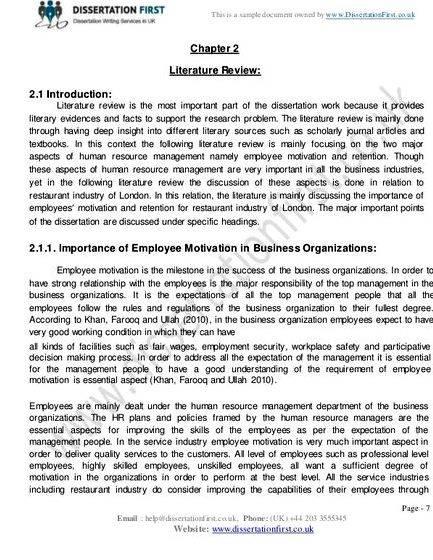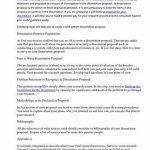Literature Review
What is a Literature Review?
A literature review is a survey and discussion of the literature in a given area of study. It is a concise overview of what has been studied, argued, and established about a topic, and it is usually organized chronologically or thematically. A literature review is written in essay format. It is not an annotated bibliography, because it groups related works together and discusses trends and developments rather than focusing on one item at a time. It is not a summary; rather, it evaluates previous and current research in regard to how relevant and/or useful it is and how it relates to your own research.
A Literature Review is more than an Annotated Bibliography or a summary, because you are organizing and presenting your sources in terms of their overall relationship to your own project.
A literature review is written to highlight specific arguments and ideas in a field of study. By highlighting these arguments, the writer attempts to show what has been studied in the field, and also where the weaknesses, gaps, or areas needing further study are. The review should therefore also demonstrate to the reader why the writer’s research is useful, necessary, important, and valid.
Literature reviews can have different types of audiences, so consider why and for whom you are writing your review. For example, a lot of literature reviews are written as a chapter for a thesis or dissertation, so the audience will want to know in what way your research is important and original. Highlighting the gap in knowledge which your research aims to fill is particularly important in this instance because you need to convince the reader that there is an opening in the area of study.
A literature review in a proposal will similarly try to convince the audience of the significance and worthiness of the proposed project. In contrast, when you are writing a literature review for a course, your professor may want you to show that you understand what research has been done, giving you a base of knowledge. In this case, you may not need to focus as much on proving where the gaps in knowledge lie, but rather, that you know what the major areas of study and key ideas are.
Questions a Literature Review Should Answer:
Asking questions such as the following will help you sift through your sources and organize your literature review. Remember, the literature review organizes the previous research in the light of what you are planning to do in your own project.
- What’s been done in this topic area to date? What are the significant discoveries, key concepts, arguments, and/or theories that scholars have put forward? Which are the important works?
- On which particular areas of the topic has previous research concentrated? Have there been developments over time? What methodologies have been used?
- Are there any gaps in the research? Are there areas that haven’t been looked at closely yet, but which should be? Are there new ways of looking at the topic?
- Are there improved methodologies for researching this subject?
- What future directions should research in this subject take?
- How will your research build on or depart from current and previous research on the topic? What contribution will your research make to the field?

The length of a literature review varies depending on its purpose and audience. In a thesis or dissertation, the review is usually a full chapter (at least 20 pages), but for an assignment it may only be a few pages.
There are several ways to organize and structure a literature review. Two common ways are chronologically and thematically.
Chronological: In a chronological review, you will group and discuss your sources in order of their appearance (usually publication), highlighting the changes in research in the field and your specific topic over time. This method is useful for papers focusing on research methodology, historiographical papers, and other writing where time becomes an important element. For example, a literature review on theories of mental illness might present how the understanding of mental illness has changed through the centuries, by giving a series of examples of key developments and ending with current theories and the direction your research will take.
Thematic: In a thematic review, you will group and discuss your sources in terms of the themes or topics they cover. This method is often a stronger one organizationally, and it can help you resist the urge to summarize your sources. By grouping themes or topics of research together, you will be able to demonstrate the types of topics that are important to your research. For example, if the topic of the literature review is changes in popular music, then there might be separate sections on research involving the production of music, research on the dissemination of music, research on the interpretation of music, and historical studies of popular music.
No matter which method you choose, remember: Within each section of a literature review, it is important to discuss how the research relates to other studies (how is it similar or different, what other studies have been done, etc.) as well as to demonstrate how it relates to your own work. This is what the review is for: don’t leave this connection out!
Guidelines to Writing Dissertation Proposals and How to Outline Them
One of the most difficult tasks involved in dissertation writing is the formulation of dissertation proposals which involves creating something out of nothing at all. The whole point of a dissertation is to create and bring about something new, new ideas or new theories, and all of this is to be presented in the form of dissertation proposals. The concept behind a dissertation proposal is to present the reader with the minimal knowledge you have, and then to persuade them into allowing you to further research and acquire more knowledge on the respective subject. The study format applied to the dissertation proposal might either be very descriptive or there might be a literature paragraph summarizing various studies and reports; leading to a conclusion. However; the latter approach has been proven to be very helpful to students in crafting dissertation proposals.
Make sure to analyze your literature or the dissertation proposal in a manner so as to find any gaps or anything you missed while crafting the proposal or anything written too descriptively. Above all, make sure to analyze the conceptual and methodological weaknesses. Do not forget about the word count of the dissertation proposal and make sure it stays at least under twenty pages.
Outlining the Dissertation Proposal
The following outline of a dissertation proposal is in a general format, but with explanations (For crafting dissertation proposals in a format directed by you and one that guarantees success, please visit dissertationtoday.com ):
- Summary. Provide an overview of the complete dissertation proposal and what you have discussed therein.
- Introduction. Write this section keeping in mind the people or committee members who are not familiar with the field your dissertation is about. Significance of the dissertation topic. questions the dissertation will explore and the problems or research the dissertation will address.
- Review of previous works. This section must indicate the theories and studies your dissertation will be built upon. Also mention the recent developments the respective field has gone through and their relation to your dissertation.
- Core argument or the central issue. In this section, present the core questions in detail which your dissertation tends to answer or problems that your dissertation proposes solutions to.
- Data. Explain all your connections with the presentation of data and the exact type of data you will be using and the specific means of acquisition of that data.
- Methodology. Explain in detail what dissertation methodology would be applied and how would it help in answering the core questions or the central problem on which the dissertation is based upon.
- Chapter Outline. Discuss briefly about the chapters and what will they contain. This would help estimate the development of the dissertation of the committee.
- Contributions. Discuss how the results of your dissertation might help.
- Time line. Explain in detail all your time consuming research work and how and when would the research work will be completed. Include the library work, the field work and methods to acquire relevant data and the time involved in the process.
- Bibliography. List all theoretical work, commentaries, field reports and publications you would be using.
- Supporting Materials. Include any other material that needs to be a part of your dissertation.
Categories





 Dissertation proposal sample nursing cover letters
Dissertation proposal sample nursing cover letters Lse international history dissertation proposal
Lse international history dissertation proposal Msc dissertation proposal sample pdf document
Msc dissertation proposal sample pdf document 20 dissertations justice pdf writer
20 dissertations justice pdf writer Phd dissertation topics in computer science
Phd dissertation topics in computer science






